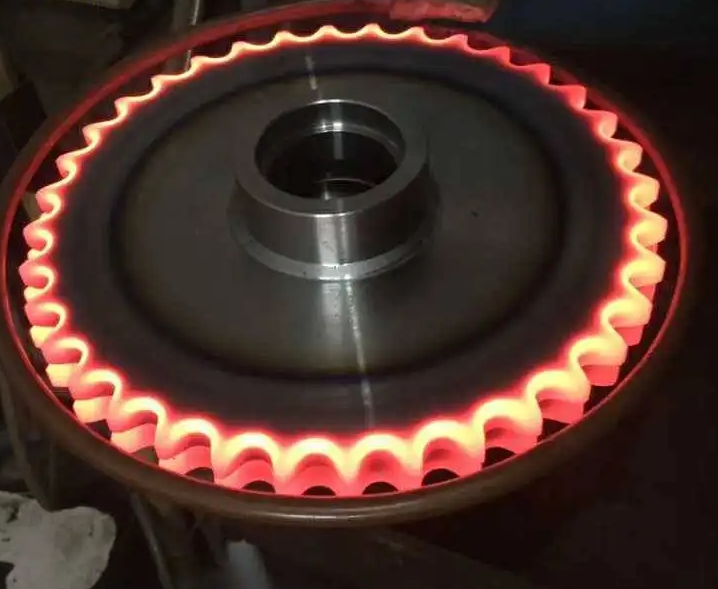- 21
- Jul
Summary of ten common quenching methods of high frequency quenching machine (2)
Summary of ten common quenching methods of high frequency quenching machine (2)
6. Compound quenching method
Compound quenching method: firstly quench the workpiece to below Ms to obtain martensite with a volume fraction of 10%~30%, and then isothermally in the lower bainite area to obtain martensite and bainite structure for the workpiece with larger cross-section. Alloy tool steel workpiece.
Seven, pre-cooling isothermal quenching method
Pre-cooling isothermal quenching method: also known as heating isothermal quenching, the parts are first cooled in a bath with a lower temperature (greater than Ms), and then transferred to a bath with a higher temperature to make the austenite undergo isothermal transformation. It is suitable for steel parts with poor hardenability or large workpieces that must be austempered.
Eight, delayed cooling quenching method
Delayed cooling quenching method: The parts are pre-cooled in air, hot water, and salt bath to a temperature slightly higher than Ar3 or Ar1, and then single-medium quenching is performed. It is often used for parts with complex shapes and parts with large thickness disparity and small deformation requirements.
9. Quenching and self-tempering method
Quenching self-tempering method: heat all the workpieces to be processed, but only immerse the part that needs to be hardened (usually the working part) in the quenching liquid to cool, and take it out in the air when the unimmersed part disappears. Quenching process with medium cooling. The quenching self-tempering method uses the heat that is not completely cooled in the core to be transferred to the surface to temper the surface. Commonly used for impact-bearing tools such as chisels, punches, hammers, etc.
Ten, spray quenching method
Jet quenching method: The quenching method of jetting water flow to the workpiece, the water flow can be large or small, depending on the required quenching depth. The spray quenching method does not form a vapor film on the surface of the workpiece, which ensures a deeper hardened layer than that of quenching in conventional water. Mainly used for local surface quenching.

